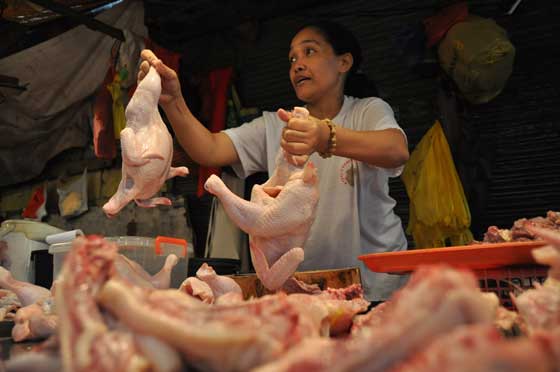When it comes to poultry farming in the Philippines, you can choose to start small or simply go big. If you are a small scale poultry farmer, you will probably be venturing into this line of business for the first time because you wish to try out a small farming venture or to raise additional income.

It is these small scale farmers that generally face the most serious challenges in the Philippines. They grapple with a condition called “farm blindness” that afflict many newbie farmers. A lot of factors that passionate and experienced farmer may take for granted will not seem so obvious to someone who is just venturing into the trade and they are likely to make lots of small mistakes that may prove to be costly over the long run.
On top of that, a beginning small to medium scale farmer may not have the advantage of networking. They are unlikely to know where to acquire the best poultry feeds and veterinary services, how to access the markets, cash-flow problems in the poultry industry as well as proper disease management and stocksmanship. All of these will inflict a heavy toll on the efficiency of your production system.
The Farm Blindness
Many of these problems are attributable to “farm blindness” which can be loosely defined as the general lack of knowledge on common sense farm management issues. A new farmer suffering from farm blindness is unlikely to know about farm situations or practices that are considered the norm virtually everywhere else.
If you are suffering from farm blindness and lacks sufficient knowledge on poultry farming, you are most likely going to end up with poor poultry performance and animal welfare. This can have a serious impact on your productive capabilities and is likely to dent the long term viability of your poultry farm. What compounds the problem is that a farmer suffering from farm blindness is even blind to the fact that this might pose a huge problem to their poultry farming enterprise.
Training and Information
The solution to this problem is generally proper training and information on poultry farming that will equip the new farmer with the right knowledge and expertise so that they can become accustomed to the industry norms when it comes to poultry farming in the Philippines.
If new farmers are exposed to constant observation and monitoring of the birds, they become used to best practice animal husbandry and will, in the future, be able to easily identify and address critical stress signals that may impact the birds’ performance.
Market Access
Market access is a serious problem for many small and medium scale poultry producers. This is one of the factors that leads many farmers to sell live birds at below the market rates. The farmers generally lack the facilities to process the poultry meat and sell them to the formal markets.
There are certain production cycles where farmers are even forced to sell their chickens within a couple of days in order to clear the farm in readiness for the next batch. The challenge for many Filipino farmers is that the market for the live chickens is not only cyclical but also very unreliable. There are cycles where farmers may even take weeks in order to clear their stock for live birds which can cause serious delays in the introduction of the next batch of chickens for the next production cycle.
Additional Costs
The erratic nature of the market for live chickens can potentially have numerous other negative knock-on effects. The first major challenge is the uncertain cash flow that can make it harder for small scale poultry farmers to advance payments for various farm inputs. This can hinder not just the productive capacity of the farmer but also the scalability.
Delays in sales will severely strain the cash flow as the farmer is not even able to recover the funds that were spent on the last production cycle. It is virtually impossible for small scale farmers to access the funds for their operations without any form of security. This means that farmers will only be able to procure farm inputs when they have the cash at hand, that is when they make a sale of their poultry products.
The farmers don’t just suffer from poor cash flow but also the inability to realize the economies of scale that could potentially cut down on the cost of production. As a result, the farmers will be unable to purchase important farm input such as feed or pullets in bulk and are unable to benefit from any cost savings that could result from bulk buying.

